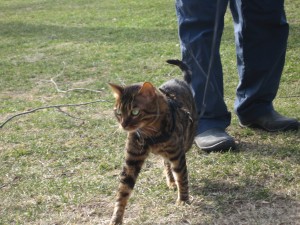
Unblocking the Flow: The Practice of Reiki

I’m rereading an amazing book that I first read when it came out in1990, Free Play, Improvisation in Life and Art, by Stephen Nachmanovitch. A testament to its awesomeness is that it’s still in print.
The author is a violinist, composer, poet, teacher, and computer artist, with a Ph.D. in the History of Consciousness. At the time of publication, he was performing improvisational violin concerts internationally, creating multi-media works (dance, theater, poetry, photography, painting, and film), and had taught, written, and lectured widely in a number of fields.
While the author is discussing the intensely spiritual act of creativity as it applies to not only the arts, but to the way we choose to live, when I first read this book, I was reading it through the eyes of a writer. This was before I was called to work with the animals, before I consciously entered the world of healing.
Reiki practice can be difficult to explain to people who have not experienced its quiet power. Hawayo Takata, who studied Reiki with its creator, Mikao Usui, and brought it to the United States just after the Second World War, urged people not to try to explain Reiki but to instead place hands on the curious and let them experience it for themselves.
Still, there are times when a brief explanation is necessary, as a prelude to placing hands or as an answer to a question posed via email or social media.
So, What is Reiki?
Here in the States, I’ve often heard people describe “doing Reiki” as channeling energy which, to be honest, can be a bit off-putting. Who wants some unidentifiable something channeled into them?
But Reiki is not a thing; it is a practice, one that involves gentle touch. This practice promotes calm and balance, which strengthens the body’s natural healing mechanisms and creates an environment for healing and personal growth.
When I place my hands on a being—human animal or non-human animal—I am holding space for that being to gently release stress and pain, and to rebalance.
It’s exciting to read Nachmanovitch this time through the eyes of not only a writer but a healer. In his chapter, “The Stream,” he talks about the ever-flowing source of all creativity: “this seemingly endless stream of music, dance, imagery, acting, or speech that comes out of us whenever we let it . . . We can choose to tap into it or not tap into it; we can find ourselves unwillingly opened up to it or unwillingly cut off from it. But it’s always there.” (p. 32)
Flow?
Let me share a few more of his words:
Spiritual traditions the world over are full of references to this mysterious juice: ch’i in China and ki in Japan . . . kundalini and prana in India; mana in Polynesia . . . The common theme is that the person is a vessel or conduit through which a transpersonal force flows. That force can be enhanced through practice and discipline of various sorts; it can become blocked or bottled up through neglect, poor practice, or fear; it can be used for good or evil; it flows through us, yet we do not own it; it appears as a principal factor in the arts, in healing, in religion. (pp. 32-33)
The ki he refers to above is the second half of the word Reiki. The person who is a vessel through which this force flows is you! He’s not referring to a professional practitioner here; he’s referring to all of us—every last one of us. We all have this transpersonal flow (meaning bigger than just one person, beyond the limits of the personal).
The job of the professional Reiki practitioner is not to channel anything into you or chase anything out of you or to manipulate your energy field . . . or perform any other invasive maneuver. The job of the Reiki practitioner is to hold space for you so that you can release pain, release fear, unblock the flow.
And while a quality Reiki practitioner can assist you with unblocking and strengthening the flow of this amazing life force, you can learn to do it yourself as well. A core principle of Reiki practice is self-healing. How brilliant that we can learn to place hands each day, to take time to nurture ourselves, calm our fears, relieve our stress, unblock the flow, and become the fully creative beings our Creator meant for us to be.




